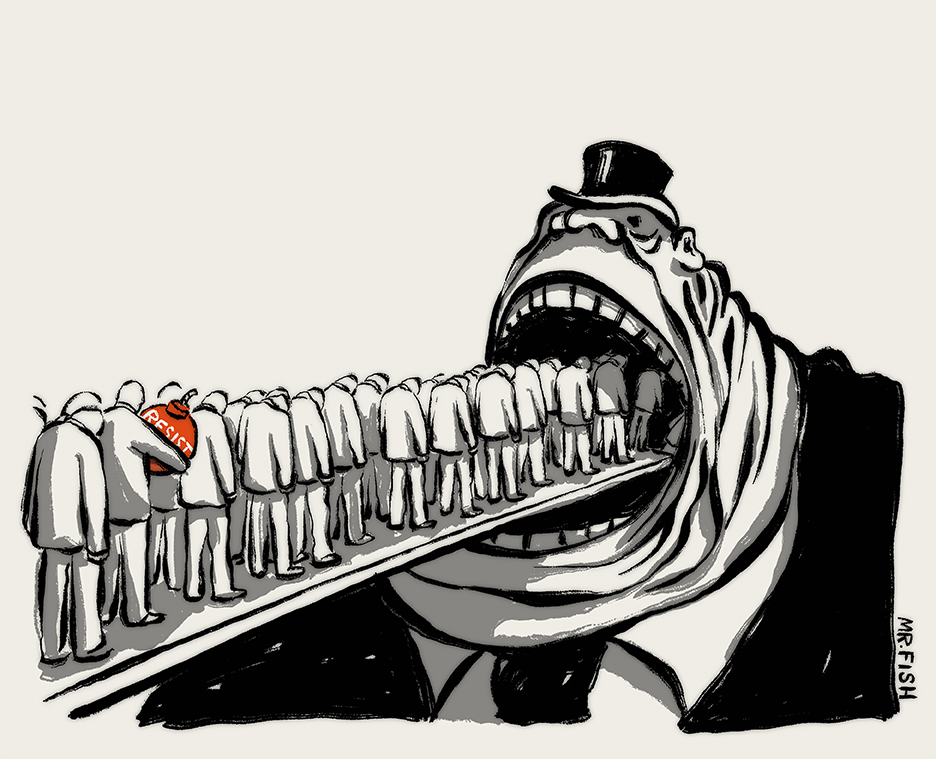From Draft NOtices, January-March 2022
Female Draft Registration Decision Delayed, for Now
— Rick Jahnkow Language that would have expanded draft registration to include women was, fortunately, pulled from the 2022 National Defense Authorization Act (NDAA) before Congress approved the bill in December. Pres. Biden then signed the NDAA on December 27, 2021.
Language that would have expanded draft registration to include women was, fortunately, pulled from the 2022 National Defense Authorization Act (NDAA) before Congress approved the bill in December. Pres. Biden then signed the NDAA on December 27, 2021.
Previously, the House, Senate and Biden were expected to approve the NDAA with registration of women included, but when the NDAA appeared headed for a deadlock in the Senate, an agreement to remove the provision was negotiated in order to secure votes from anti-feminist Republican senators who opposed the drafting of women. As a result, the current system of only registering males will continue to be in effect.
Committee Opposed to Militarism and the Draft (COMD)
From Draft NOtices, October-December 2021
Ethnic Studies: Take One
— Isidro Ortiz, PHD
The late 1960s and early ‘70s witnessed widespread calls for ethnic studies in higher education. Across the country, these calls translated into the establishment of ethnic studies departments and programs, such as the Department of Chicana and Chicano Studies at San Diego State University. Like other units of its kind, this department has served as a vehicle for unprecedented instruction, pathbreaking scholarship, and community engagement. Its institutionalization promoted the democratization of higher education.
Almost 50 years after the movement for ethnic studies in higher education emerged, one of the most significant developments in educational circles has been the rise of a movement for ethnic studies in K-12 schools. The movement has encompassed educators, students, and members of the community at large. It has reflected the ethnic and racial diversity of today’s schools and promises to continue to bridge the boundaries that have existed among communities.
From Draft NOtices, October-December 2021
An Undiscussed Consequence of Expanded Draft Registration
— Rick Jahnkow
 The most immediate danger of expanding draft registration to women is not, as some people think, an increased likelihood of a draft. The chance of that happening anytime in the near future continues to be remote. It wasn’t even on the table for serious government consideration after 9/11, or during the multiple U.S. troop deployments to the wars in Afghanistan and Iraq.
The most immediate danger of expanding draft registration to women is not, as some people think, an increased likelihood of a draft. The chance of that happening anytime in the near future continues to be remote. It wasn’t even on the table for serious government consideration after 9/11, or during the multiple U.S. troop deployments to the wars in Afghanistan and Iraq.
A much more imminent danger is the actions that will be taken in schools to convince the female half of the 18-year-old population to join males in registering with Selective Service.
In the 1980s, we saw how relatively low rates of male draft registration in some parts of the country plagued Selective Service. The agency would issue press releases claiming that young men were overwhelmingly showing their patriotic willingness to submit their names and contact information for the sake of national readiness, but then the media would often report that actual numbers of registrants were below the stated expectations of Selective Service. The embarrassed draft agency had to come up with an excuse for the dearth of registration enthusiasm, and the best it could come up with was that there was a simple lack of awareness among young men. This was despite millions of dollars spent on Selective Service registration promotions and the enormous amount of media coverage devoted to the issue. And when the first registration resister trials were initiated to “send a message” about the risks of non-compliance, we learned in California that the state’s registration rate went down!






